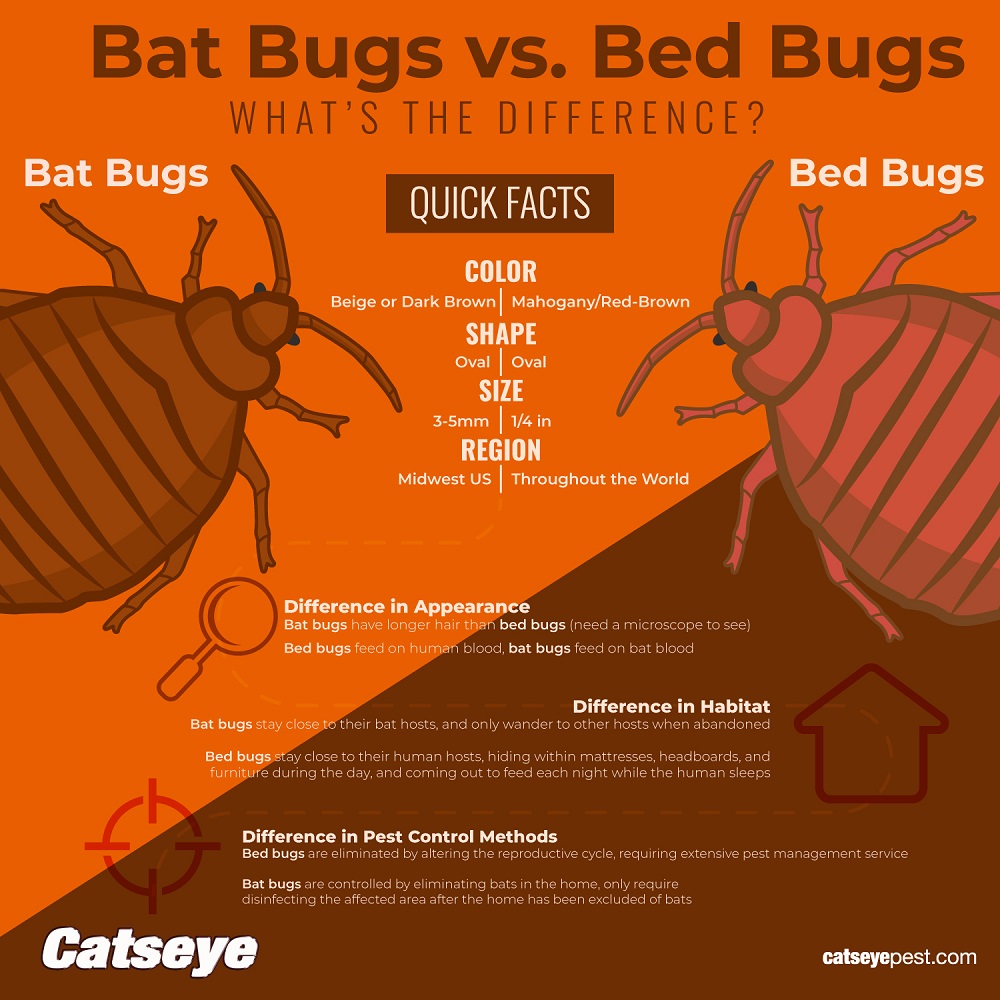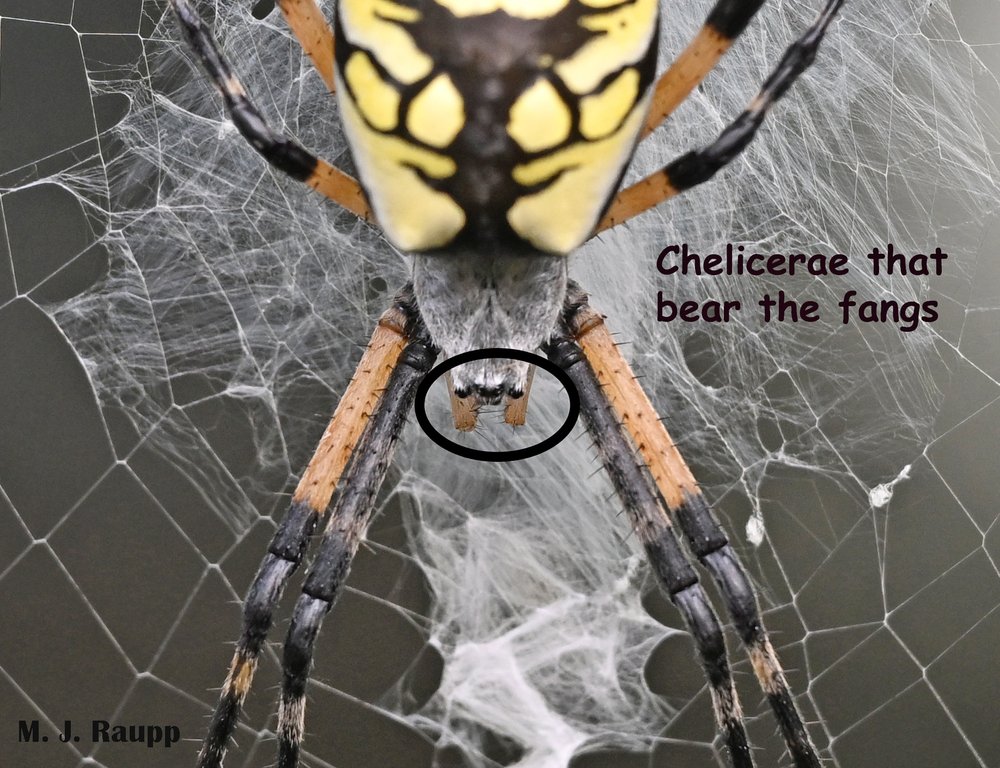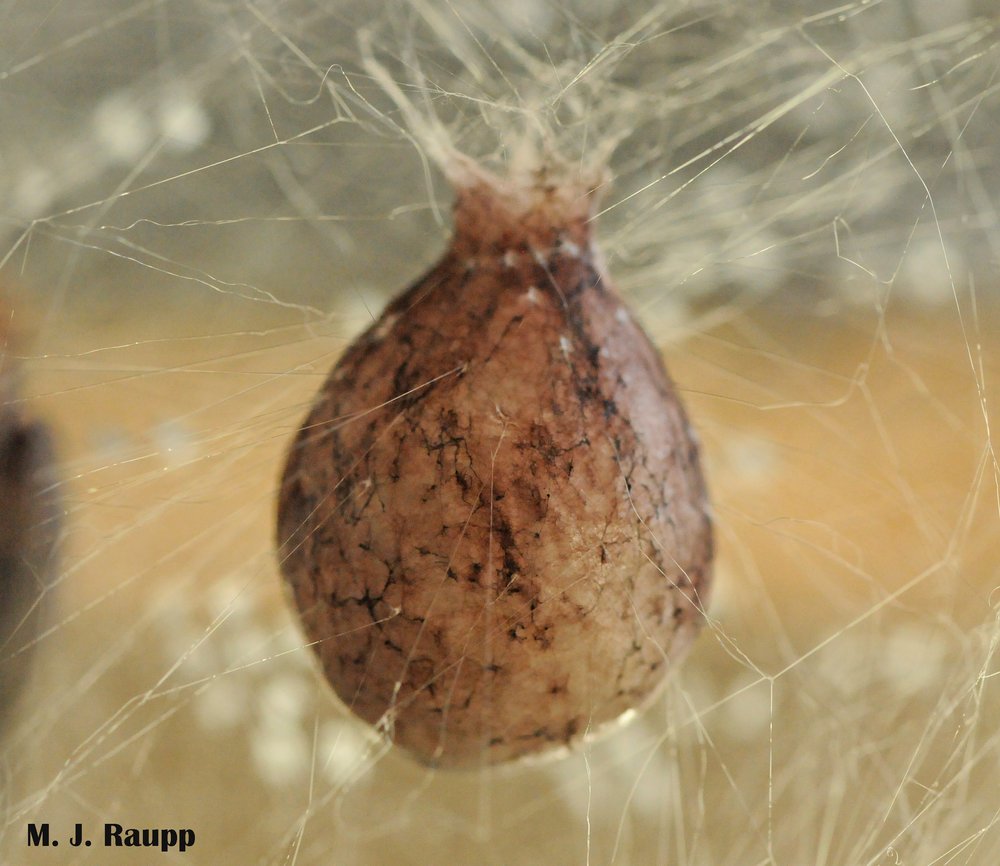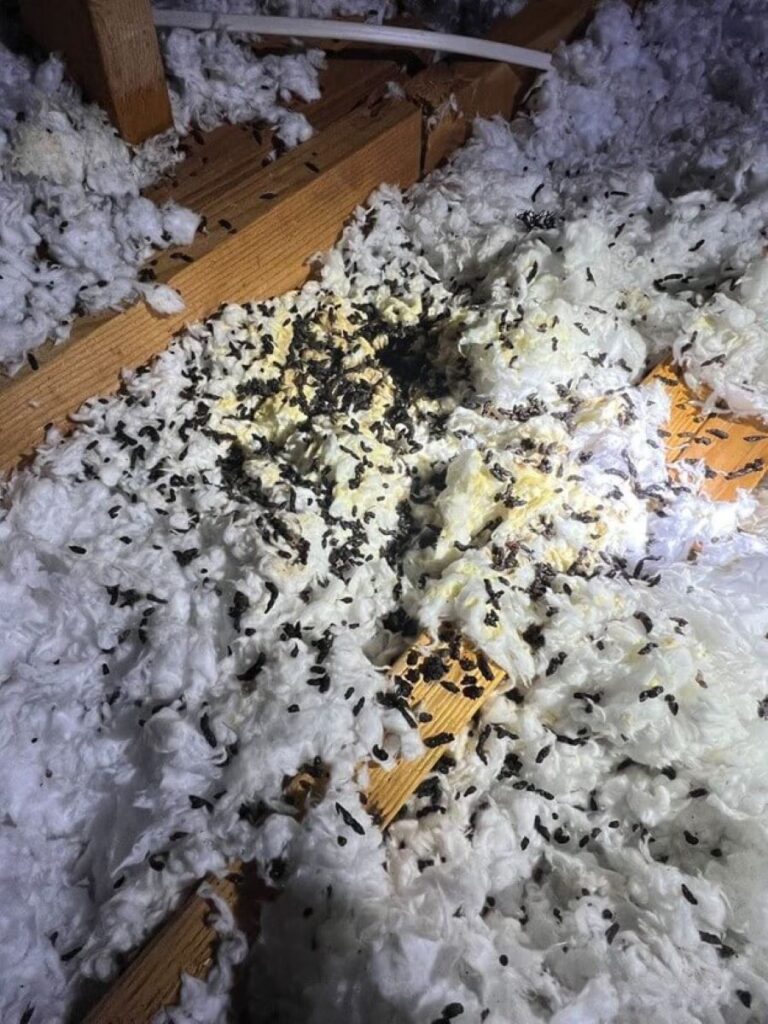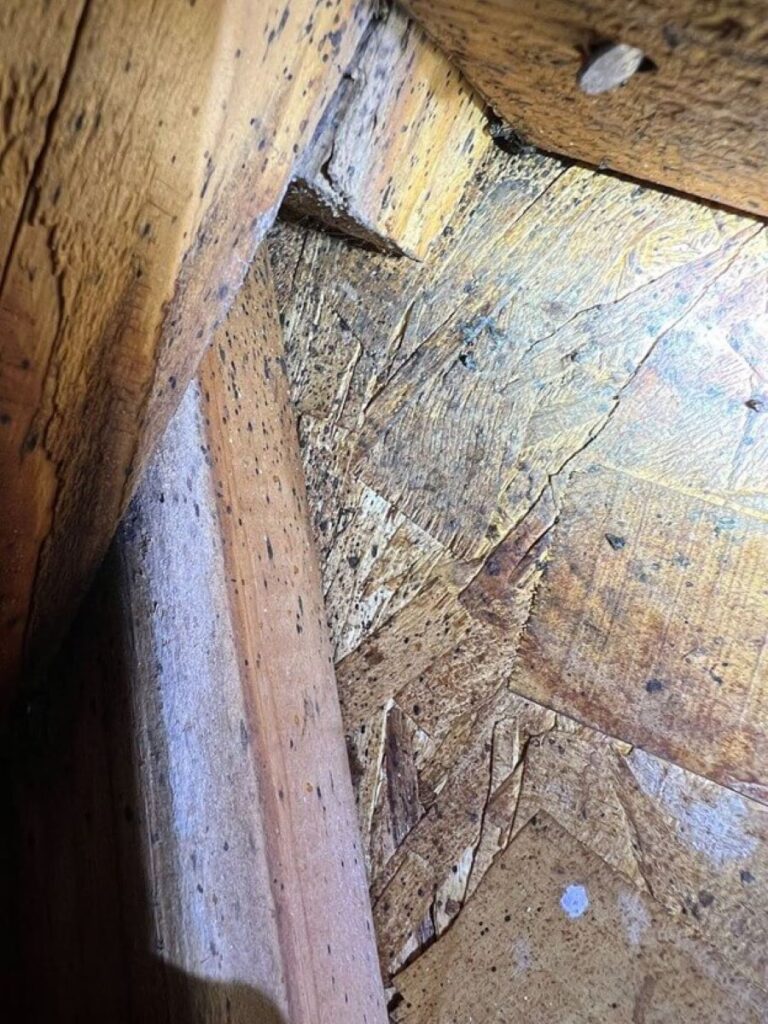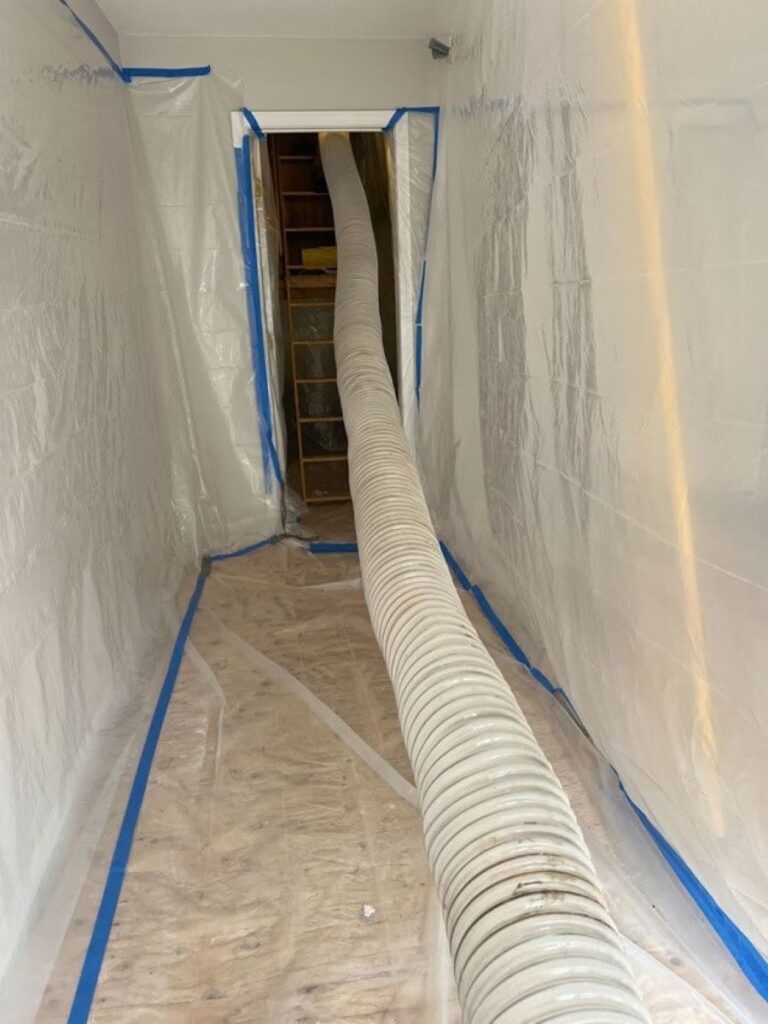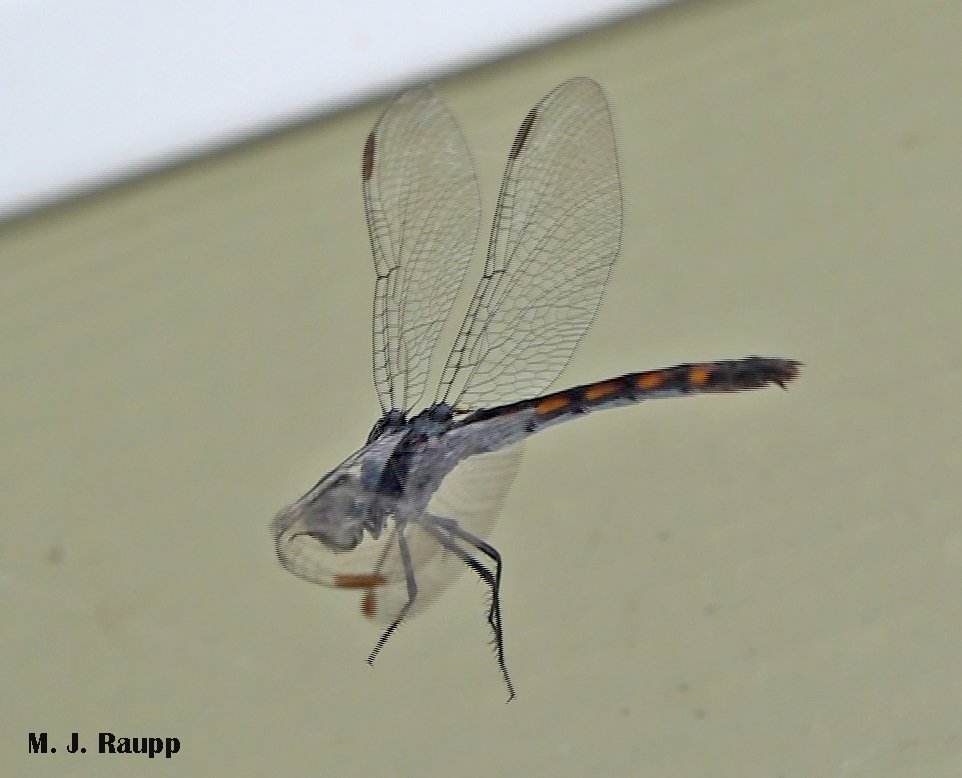From the Bug of the Week mailbag – Rose of Sharon on the menu for the hibiscus scentless plant bug, Niesthrea louisianica
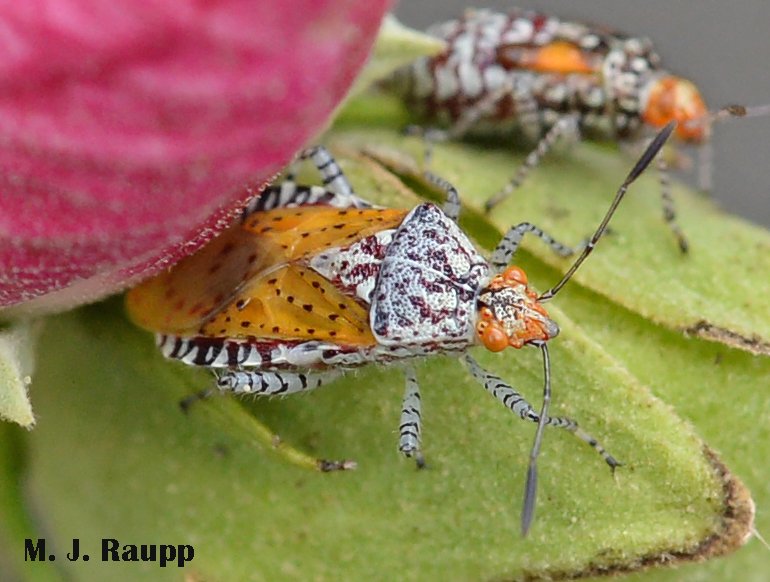
An adult hibiscus scentless plant bug hiding beneath a flower bud glams for the paparazzi.
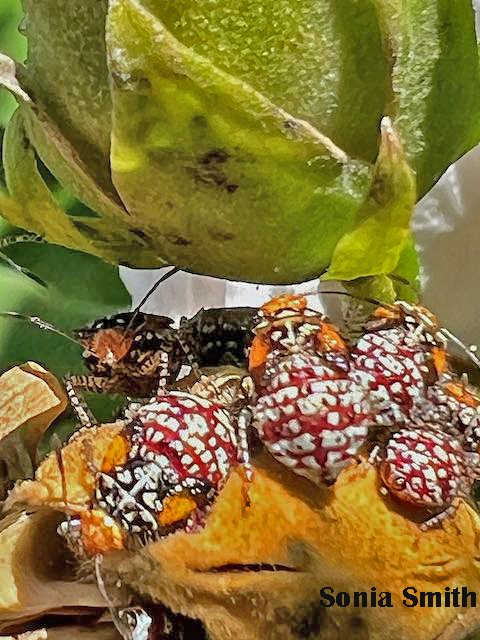
Harlequin colors of orange, black, and white are definitely “in” this pre-Halloween season. Just ask nymphs of pretty hibiscus scentless plant bugs as they the suck fluids from buds of Rose of Sharon. Image credit: Sonia Smith
Last week a super sleuthing Master Gardener discovered a highly suspicious orange, black, and white bug on her thirsty Rose of Sharon. Fearing a visit from the dreaded spotted lanternfly she hit the web-o-sphere and correctly identified the critter as a scentless plant bug. Nice detective work. My first encounter with this fetching rascal happened on a trip to a home improvement store, where I discovered a forlorn collection of Rose of Sharon shrubs desperately hoping someone would buy them before they were relegated to the dumpster to make room for a sprouting forest of plastic Christmas trees. One look at blossoms that had since gone to seed revealed hordes of magnificent scentless plant bugs decked out in harlequin costumes of orange, black, and white. With all the recent fuss about invasive bugs like the spotted lanternfly and brown marmorated stink bug, my angst twisted on the possibility that this was yet another case of a noxious invader arriving on our shores with a shipment of exotic plants. A quick look at the labels on the Rose of Sharon revealed that these plants were homegrown. A little poking around on the internet confirmed this to be a native bug with some redeeming qualities rather than a nocent new pest. Whew, what a relief!
Although this bugger was new to my eyes, Niesthrea louisianica is long known to occur in North America from New York to Florida and west to California. This curious sucker is a gourmand for plants in the mallow family including cotton, Chinese lantern, okra, and Rose of Sharon. Like its cousins, the boxelder bug and red-shouldered bug that we met in previous episodes, Niesthrea has sucking mouthparts used to probe vegetation and seeds and extract liquefied nutrients. Unlike stink bugs and boxelder bugs that flock to houses to overwinter, Niesthrea finds a protected refuge outdoors beneath leaves and duff near its host plants. In spring, adults return to plants, begin feeding on foliage, and after mating, lay eggs in clusters of one to three dozen on the foliage or developing fruit of their host. After about a week, eggs hatch and tiny nymphs begin to feed. The plant bug requires little more than a month to complete a generation in summertime, and in southern states several generations occur each year.
During the growing season when flower buds abound, scentless plant bugs complete several generations on members of the mallow family. In the month of September, winged adults like the one on the left mill about with pretty orange and black nymphs. Later, when only dry pods remain, adults search for seeds to suck on, spend a little time hanging out with the gang, and work on looking sharp with some careful grooming of legs, wings, and derrière.

Rose of Sharon is a favored pollen source for many pollinators.
Bug of the Week has visited several exotic insects that attack our native plants after arriving in the US. However, beautiful Niesthrea louisianica turns the table and demonstrates how plant-feeding bugs sometimes become our allies when the plants on their menu are weeds. Throughout the corn and soybean growing regions of the US, an aggressive exotic weed called velvetleaf competes with our crops for nutrients and water. Velvetleaf is a member of the mallow family and thereby qualifies as a dinner item for hungry Niesthrea. By attacking the pods of velvetleaf and killing developing seeds inside, this small bug plays an important role in reducing the numbers of noxious velvetleaf weeds in many parts of the country. In one study, more than 80,000 Niesthrea lousianica were raised and released in several Midwestern states. Near the points of release, Niesthrea made a serious dent in the viability of velvetleaf seeds. Score one for the hometown bug.
Acknowledgements
Bug of the Week thanks Sonia Smith for inspiring this week’s episode and providing the nice image of scentless plant bugs. Two fascinating references, “Life History of Niesthrea louisianica (Hemiptera: Rhopalidae) on Rose of Sharon in North Carolina” by Al Wheeler and “Inundative biological control of velvetleaf, Abutilon theophrasti [Malvaceae] with Niesthrea louisianica (Hem.: Rhopalidae) by N. R. Spencer, were used as references for this episode.
This post appeared first on Bug of the Week


